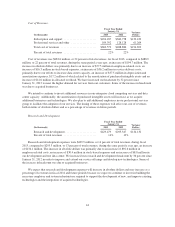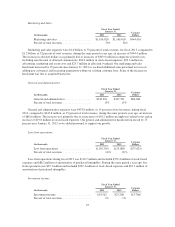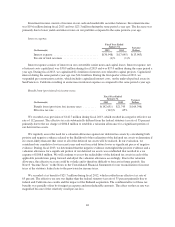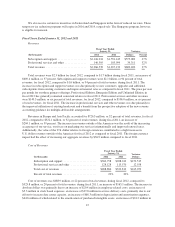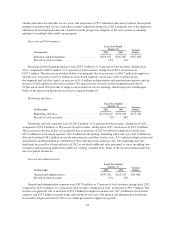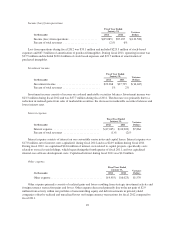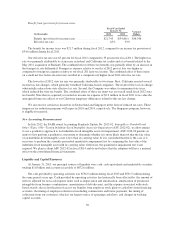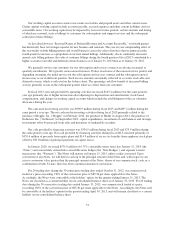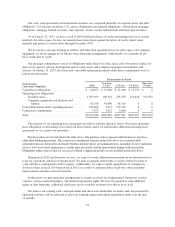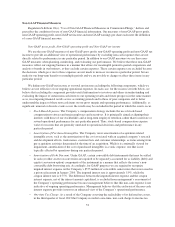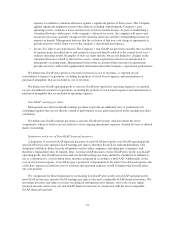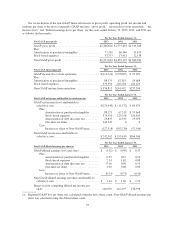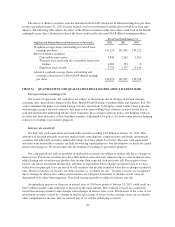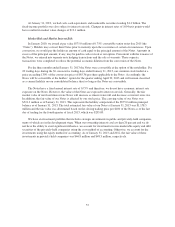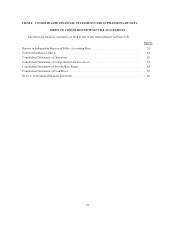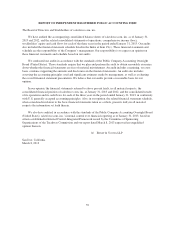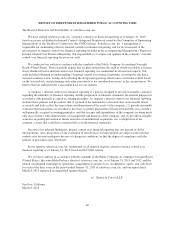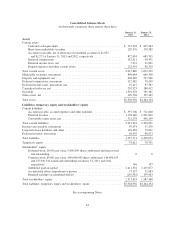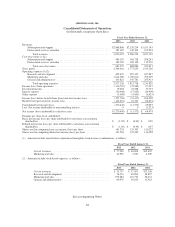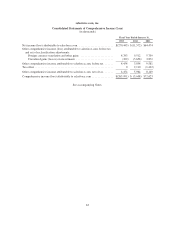Salesforce.com 2013 Annual Report Download - page 57
Download and view the complete annual report
Please find page 57 of the 2013 Salesforce.com annual report below. You can navigate through the pages in the report by either clicking on the pages listed below, or by using the keyword search tool below to find specific information within the annual report.Non-GAAP Financial Measures
Regulation S-K Item 10(e), “Use of Non-GAAP Financial Measures in Commission Filings,” defines and
prescribes the conditions for use of non-GAAP financial information. Our measures of non-GAAP gross profit,
non-GAAP operating profit, non-GAAP net income and non-GAAP earnings per share each meet the definition
of a non-GAAP financial measure.
Non-GAAP gross profit, Non-GAAP operating profit and Non-GAAP net income
We use the non-GAAP measures of non-GAAP gross profit, non-GAAP operating profit and non-GAAP net
income to provide an additional view of operational performance by excluding non-cash expenses that are not
directly related to performance in any particular period. In addition to our GAAP measures we use these non-
GAAP measures when planning, monitoring, and evaluating our performance. We believe that these non-GAAP
measures reflect our ongoing business in a manner that allows for meaningful period-to-period comparisons and
analysis of trends in our business, as they exclude certain expenses. These certain expenses are excluded because
the decisions which gave rise to these expenses are not made to increase revenue in a particular period, but are
made for our long-term benefit over multiple periods and we are not able to change or affect these items in any
particular period.
We define non-GAAP net income as our total net income excluding the following components, which we
believe are not reflective of our ongoing operational expenses. In each case, for the reasons set forth below, we
believe that excluding the component provides useful information to investors and others in understanding and
evaluating the impact of certain non-cash items to our operating results and future prospects in the same manner
as us, in comparing financial results across accounting periods and to those of peer companies and to better
understand the impact of these non-cash items on our gross margin and operating performance. Additionally, as
significant, unusual or discrete events occur, the results may be excluded in the period in which the events occur.
•Stock-Based Expenses. The Company’s compensation strategy includes the use of stock-based
compensation to attract and retain employees and executives. It is principally aimed at aligning their
interests with those of our stockholders and at long-term employee retention, rather than to motivate or
reward operational performance for any particular period. Thus, stock-based compensation expense
varies for reasons that are generally unrelated to operational decisions and performance in any
particular period.
•Amortization of Purchased Intangibles. The Company views amortization of acquisition-related
intangible assets, such as the amortization of the cost associated with an acquired company’s research
and development efforts, trade names, customer lists and customer relationships, as items arising from
pre-acquisition activities determined at the time of an acquisition. While it is continually viewed for
impairment, amortization of the cost of purchased intangibles is a static expense, one that is not
typically affected by operations during any particular period.
•Amortization of Debt Discount. Under GAAP, certain convertible debt instruments that may be settled
in cash (or other assets) on conversion are required to be separately accounted for as liability (debt) and
equity (conversion option) components of the instrument in a manner that reflects the issuer’s non-
convertible debt borrowing rate. Accordingly, for GAAP purposes we are required to recognize
imputed interest expense on the Company’s $575 million of convertible senior notes that were issued in
a private placement in January 2010. The imputed interest rate is approximately 5.9%, while the
coupon interest rate is 0.75%. The difference between the imputed interest expense and the coupon
interest expense, net of the interest amount capitalized, is excluded from management’s assessment of
the Company’s operating performance because management believes that this non-cash expense is not
indicative of ongoing operating performance. Management believes that the exclusion of the non-cash
interest expense provides investors an enhanced view of the Company’s operational performance.
•One-time Tax Charge. As a result of the Company assessing the realizability of its deferred tax assets,
in the third quarter of fiscal 2013 the Company recorded a one-time, non-cash charge to income tax
53



